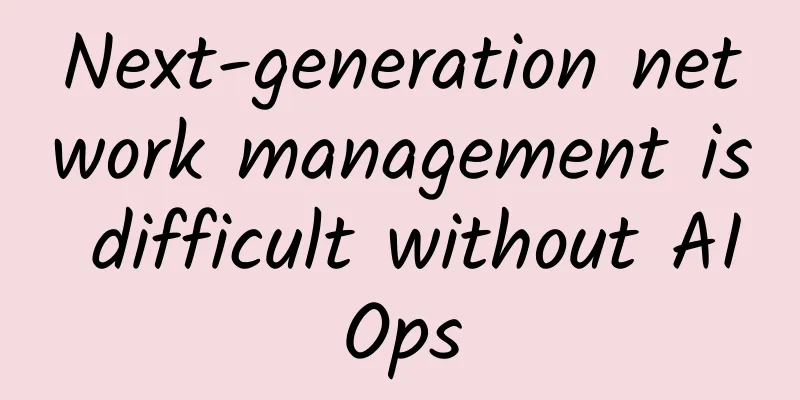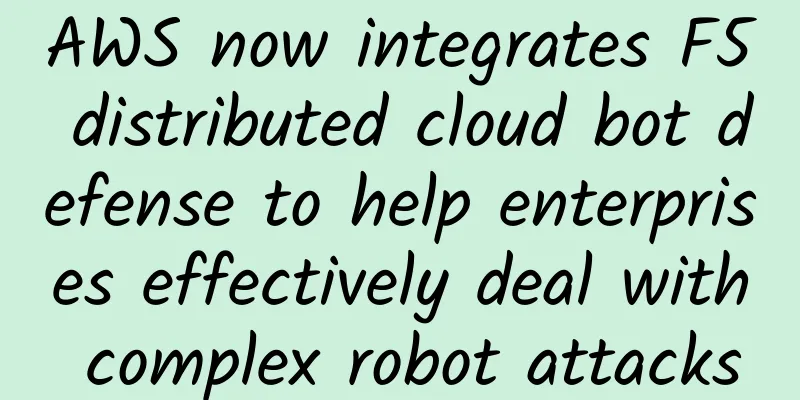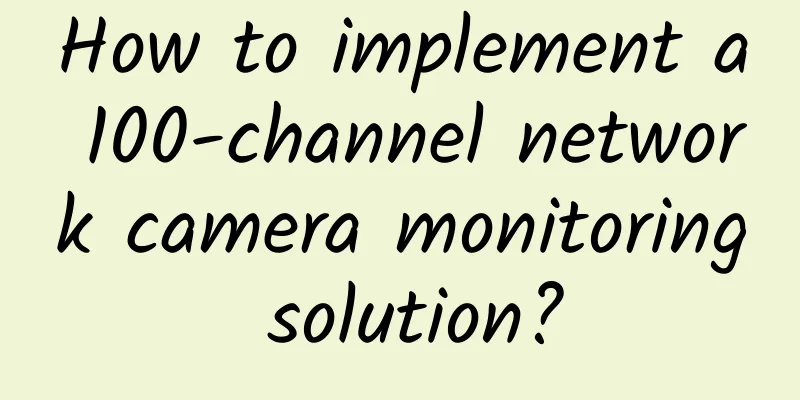Juniper Networks' "Survival of the Fittest" in the Cloud Era

|
"Survival of the fittest" is one of the core concepts in Darwin's theory of evolution. It applies not only to the biological world, but also to all living individuals, including all kinds of large and small enterprises seeking survival in market competition. As the importance of cloud and mobility continues to grow, what does it mean for the network? What do network vendors need to adapt to? AE Natarajan, senior vice president of global research and development at Juniper Networks, believes that it means that the network will become more complex, and vendors must deal with increasing difficulties in product design, deployment, and provision in order to ensure smooth operation of network traffic. AE Natarajan, Senior Vice President of Global Research and Development, Juniper Networks In fact, Juniper Networks has obviously taken some actions - new products and platforms are constantly launched to cope with network complexity and traffic growth; standard or customized solutions are gradually released, and efforts are made to adopt targeted deployment in different countries; the company as a whole is also transforming towards software and services. It can be said that Juniper Networks in the cloud era is interpreting the "survival of the fittest" in the theory of evolution with practical actions. Networks in the cloud era need to adapt to complexity and traffic explosion The opening of the Olympic Games, ticket purchases for the Spring Festival travel rush... Whenever there are major events and news, as well as various emergencies, huge data flows need to be quickly transmitted to the user end. At this time, network operators must be able to provide effective support to ensure that users can obtain vital network services. In order to adapt to the network complexity and sudden explosion of traffic, Juniper Networks is working tirelessly with partners and customers around the world to help network operators achieve all of the above, so that users can experience more convenience in use. "I think a good approach is to obtain information from the network through telemetry technology, then analyze and observe the information and data, and take corresponding actions based on this information and data." AE Natarajan was talking about the automation that Juniper Networks is continuously promoting, which can also be understood as popular means such as artificial intelligence and deep learning. Although automation cannot be achieved overnight, it does not prevent Juniper Networks from making some progress, such as the development of the new product HealthBot. Based on certain rules and intentions, most of the traffic will pass smoothly during the network connection process, but it is not impossible to rule out packet loss. At this time, HealthBot can intelligently detect packet loss caused by excessive traffic, and then issue instructions through the controller to re-arrange this part of the traffic to another connection. So can the traffic be transferred? Will it be lost again after being transferred? This cannot be separated from NorthStar, another product of Juniper Networks. "For example, when the Second Ring Road in Beijing is congested, the traffic control department decides to divert some vehicles and people to the Third Ring Road, but it is not ruled out that the Third Ring Road is also congested, so a simulation test is needed to determine whether the traffic can be diverted. What NorthStar has to do is to perform such simulation tests, and then determine whether the data traffic can be transferred. If the answer is yes, it will issue a command to HealthBot to execute, to avoid the situation where the transfer is worse than not transferring." said AE Natarajan. In general, HealthBot is mainly for data collection and analysis, and action planning based on the analysis results; NorthStar is mainly for simulation and specific deployment of relevant plans. Currently, these two products are on sale. In addition, Juniper Networks' important innovations include the innovation of the operating system - upgrading Junos to Junos Evolved, so that more Junos can run on standard Linux systems. There are three main reasons for doing this: first, it is a brand-new architecture for the new generation of networks, which can separate the state of the entire network from the underlying operating system, allowing the system to re-learn; second, it is actually a modular product, which can achieve greater scale through decoupling; third, using Linux as the actual operating system makes it easier for third parties and customers to obtain more added value on a relatively open platform, including their own applications, and in this process, Juniper Networks will also provide some APIs for support. "The above innovations are very important to Juniper Networks and are also the company's more significant innovations in the past six months." AE Natarajan said that the current network is becoming more and more complex, and cloud and 5G have also caused huge changes in traffic patterns and the scale of traffic is also growing explosively. All of this requires the network to be able to better adapt to this new situation. Meeting customer needs through standard + customized solutions “This visit to China is a great opportunity. I am honored to meet several important Juniper Networks OTT customers in China. They told me that the situation in China is basically consistent with the global situation, with the same trend of change, the same rapid growth and the same transformation. We hope to work together with our partners and OTT customers to create more comprehensive solutions,” said AE Natarajan. In order to emphasize the importance of cooperation with partners and customers, AE Natarajan also specifically pointed out that the research and development of NorthStar and HealthBot is inseparable from the cooperation with customers and partners. They are all inspired in the process of helping customers solve problems and ultimately realize productization. He also particularly hopes to innovate with Chinese partners and customers. Sofiane Essanaa, vice president of global research and development at Juniper Networks, also said that Juniper Networks is a global company with operations in Asia Pacific, the entire Americas, Europe, the Middle East and Africa. Its way of working has always been to provide customers with "building blocks" so that they can use corresponding products and technologies to build the products they need, helping them accelerate the market launch of products and services. Sofiane Essanaa, Vice President of Global Research and Development, Juniper Networks From this perspective, NorthStar and HealthBot can be regarded as two "building blocks" in Juniper Networks' efforts to build the products and solutions that customers need. Moreover, in order to obtain more "building blocks", Juniper Networks recently reached a partnership with Ericsson to further accelerate 5G deployment. Currently, Juniper Networks' operating system can be run on Ericsson's hardware. It is worth mentioning that Juniper Networks has two types of solutions based on various "building blocks": one is the solution developed to meet customer needs, which is called "exogenous" solution within the company; the other is the "endogenous" solution developed by the company on its own initiative and then promoted externally. According to common understanding, the former is a customized solution, and the latter is a universal standard solution. The two go hand in hand, not only meeting the general needs of customers, but also meeting the needs of customers at a specific time and within a specific scope. At the same time, Juniper Networks will also adopt targeted deployment according to the development rhythm of the markets in various countries. China is also naturally under consideration. According to Juniper Networks Greater China Chief Technology Officer Jing Youhao, Juniper Networks has done very well in the Chinese OTT market in the past two years. Currently, Juniper Networks' new technology has begun to be tried out among OTT customers in North America; domestic traffic growth also requires network optimization, which is also a topic that Juniper Networks is discussing. "Juniper Networks will work closely with customers in various countries to understand their unique needs and then provide them with the capabilities they need. As for the OTT industry, our technical team will also come to China frequently to develop customized solutions based on customer needs." AE Natarajan said that such customized solutions are very popular with customers. There are already many such cases in China's OTT industry, and Juniper Networks will continue to carry out this work in the future. Not only that, Juniper Networks is also actively participating in work related to standard setting. On the one hand, it is working with companies in China's OTT industry to establish industry standards; on the other hand, the company will work with Chinese and international customers to develop standards that can be implemented globally. Cloud is a huge driving force for network evolution and enterprise transformation Transformation is perhaps the most frequently mentioned word in the IT industry. Specifically for Juniper Networks, its transformation in the cloud era can be traced from the development of new software products and the customization of solutions that are close to customer needs. "The industry is transforming, customers are transforming, and Juniper Networks must also be closer to customers and the market in terms of products and services, and transform from a traditional hardware manufacturer to software and services," said Jing Youhao. Juniper Networks Greater China Chief Technology Officer Hiroshi Jing In the Chinese market, Juniper Networks is promoting two major initiatives: one is to cooperate with large public cloud service providers to provide them with switches, routers, security and software products, and then implement the products in various industries such as finance and government through public cloud service providers; the other is to cooperate with second-tier operators to build cloud-based services for customers through their network resources, Juniper Networks' SD-WAN software, and third-party cloud management platforms, thus forming a larger ecosystem. Juniper Networks' exploration of the Chinese market is precisely a microcosm of the company's overall transformation in the cloud era. As Sofiane Essanaa said, some of Juniper Networks' products are trying to be free of hardware binding, which can be understood as a way of transformation to software; another way the company sells software in the form of licenses, including Junos and RPD, is also an area where Juniper Networks is investing heavily in development, hoping to make achievements in software and bring good cash flow to the company. Of course, hardware products, especially network chips, are still of great significance to Juniper Networks. In the past 20 years, the company has made great achievements in this field. It has not only dedicated chips but also general-purpose chips, which cannot be abandoned during the transformation process. Therefore, Juniper Networks will expand its capabilities through acquisitions, including some companies that are relatively good in software and control, so as to complete the overall and coordinated solution delivery. The recent acquisition of Mist Systems reflects the above idea of Juniper Networks. Mist Systems is a Wi-Fi company. Unlike traditional Wi-Fi companies, it uses cloud-based intelligent management to improve user experience, which is very consistent with the company's overall concept of delivering value through cloud and software, as well as the trend of cloud-network integration. And from now on, cloud-network integration has a huge market space because many services are provided through the cloud. "Our predictions for the future are not entirely accurate, but the evolution and transformation of the entire network, including cloud, mobility, and collaboration in a broad sense, are very clear trends, and the huge driving force behind them is cloud." AE Natarajan feels that at present, people may not even have touched the tip of the market iceberg, let alone imagine the disruptive impact of 5G, or even the future 6G and 7G. Specifically speaking of the growing OTT market, Juniper Networks' two vice presidents in charge of global R&D are optimistic about future growth. As more and more applications move to the cloud and everything becomes mobile, while bringing exponential growth to the market, customers' demand for security issues is becoming increasingly urgent. To this end, Juniper Networks is also constantly increasing its attention to network security and continues to carry out corresponding acquisitions to ensure the security of data and applications exposed in the cloud. The industry's demand for security will also become another powerful engine driving the continued growth of the network market. |
>>: Juniper Networks' SD-WAN as a Service Reshapes Enterprise Branch Networks
Recommend
The most feared problems when migrating from data center to IDC data center
1. Introduction When an enterprise wants to chang...
Energy-saving building 5G solutions are the key to green buildings
Building equipment suppliers are prioritizing gre...
Is 5G connectivity the future of IoT?
The three major US mobile operators AT&T, T-M...
Megalayer: Singapore native IP annual payment starts from 249 yuan, Singapore/Hong Kong/Philippines/US VPS annual payment starts from 199 yuan
Megalayer recently launched a VPS host in Singapo...
9 steps to a trouble-free Wi-Fi upgrade
In many offices, Wi-Fi represents the great break...
Ethernet Alliance Chairman: Flexible Ethernet is the key direction for future network development
In the past, when people mentioned Ethernet, the ...
Huarui Cloud: Hong Kong CN2 GIA lightweight cloud server from 19 yuan/month, Inner Mongolia BGP enterprise cloud server from 34 yuan/month
Huaruiyun is affiliated to Shenzhen Huaruiyun Net...
Tell you the real strength of the four major communication operators' 5G
Recently, our country has determined the 2020 &qu...
Blockchain subverts the underlying architecture of the financial industry and opens a new era of value interconnection
Blockchain is essentially a decentralized databas...
Wi-Fi 6 and 5G: Which is more secure, and where will our data go?
Historically, one of the biggest drawbacks of Wi-...
5G, why not completely jointly build and share wireless access networks?
The key to 5G is to provide diversified services ...
The impact of 5G on the development of Web front-end and the future prospects of front-end engineers
The advent of the 5G wave has attracted worldwide...
Data centers need to speed up and improve quality to cope with changes through innovation
2020 is a critical year for the large-scale const...
ZJI: Hong Kong VDS Superset Series 20% off 450 yuan/month, Platinum 8352Y/16G memory/240G SSD/10M CN2+BGP
ZJI is the original well-known WordPress host Wei...
The Ministry of Industry and Information Technology interprets eight hot spots in the development of industrial communications in the first quarter
On April 25, the State Council Information Office...









